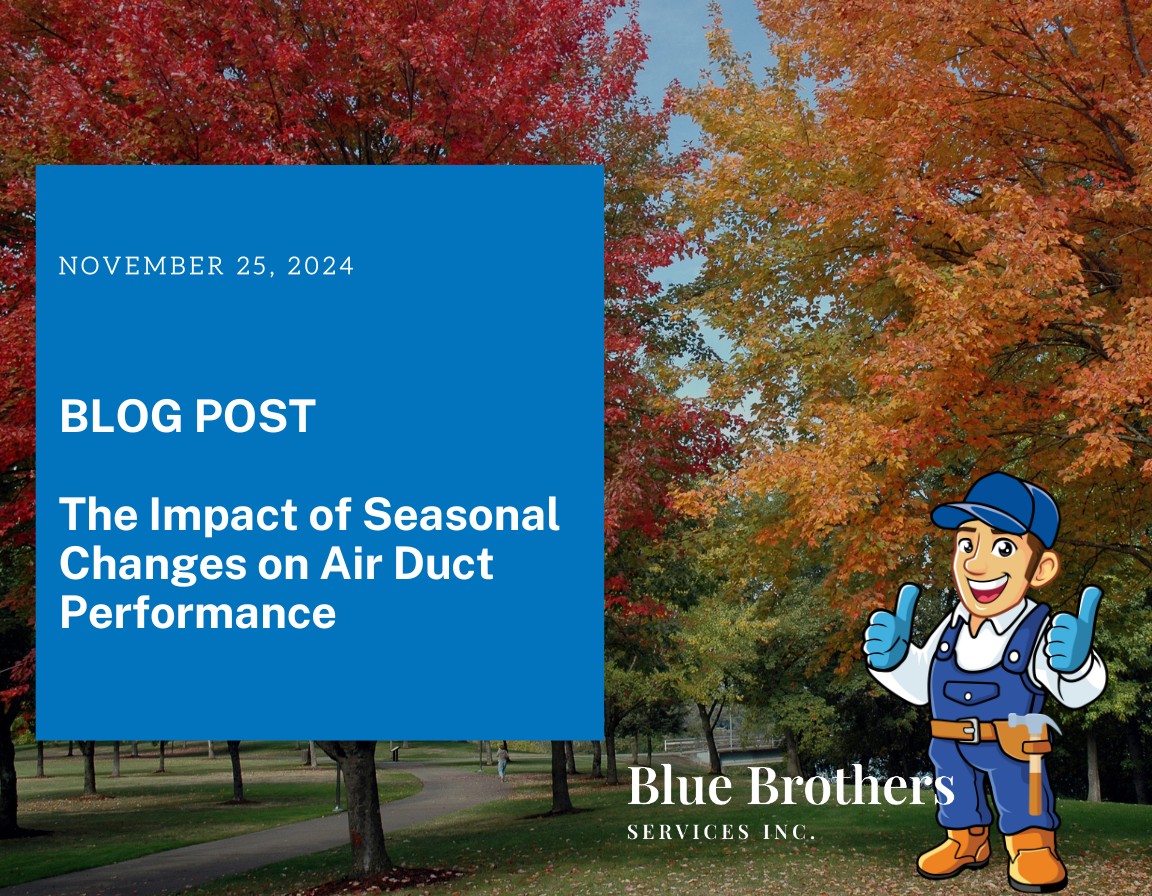For homeowners in British Columbia, Alberta, and Saskatchewan, understanding how seasonal changes affect air duct performance and overall HVAC efficiency is crucial for maintaining optimal home comfort and managing energy costs effectively. This expanded guide delves deeper into each season’s challenges and solutions, ensuring your HVAC system operates efficiently all year round.
Understanding Seasonal Dynamics
Spring and Summer Challenges: During these warmer months, homes can face increased levels of pollen, contributing to poorer air quality and potential allergy flare-ups. The higher humidity typical of this season also escalates the risk of mold growth within air duct systems, further impacting air quality and HVAC efficiency. The combination of pollen and humidity can create an environment in your ductwork that not only strains the system but also poses significant health risks.
Strategies for Spring and Summer:
- Regular Duct Cleaning: Remove allergens and obstructions to improve airflow and system efficiency.
- Humidity Control: Implement dehumidifiers or upgrade HVAC systems with humidity control features to mitigate mold growth.
Fall and Winter Preparedness: As temperatures drop, heating systems are put to the test, especially in colder regions like Calgary and Saskatoon. Poorly maintained or clogged ducts can severely strain the system, causing it to consume more energy and undergo increased wear and tear. These conditions can significantly shorten the lifespan of your HVAC system and lead to higher utility bills.
Strategies for Fall and Winter:
- Insulation Checks: Ensure that your home, including ductwork, is properly insulated to maintain heat and system efficiency.
- System Tune-ups: Before the cold sets in, have a professional inspect and tune your heating system to address any potential issues.
Year-Round Maintenance Tips
- Regular Duct Cleaning: Aim to schedule professional duct cleaning services at least once a year to remove dust, pollen, and debris, which can help maintain clean airflow and reduce energy costs.
- Seasonal HVAC Inspections: Each season brings its own set of challenges; having your HVAC system inspected by professionals can preempt issues that affect performance.
- Filter Maintenance: Regularly changing your HVAC filters is crucial. During high-pollen months, consider increasing the frequency to maintain indoor air quality.
Enhancing Long-Term HVAC Health
Smart Thermostats: Installing a smart thermostat can optimize your heating and cooling schedules based on your lifestyle, improving energy efficiency and reducing costs.
Upgrade Opportunities: For older systems, consider upgrades that focus on energy efficiency. Modern HVAC systems are more efficient and can handle seasonal fluctuations better.
Ventilation Improvements: Good ventilation can help manage moisture and reduce the workload on your HVAC system, particularly important in areas with high humidity levels.
Conclusion
The impact of seasonal changes on your HVAC system is significant. By taking proactive steps to address these changes—through regular maintenance, strategic upgrades, and appropriate seasonal care—you can ensure that your system not only survives but thrives throughout the year. This not only improves your home comfort but also contributes to a healthier living environment while keeping energy costs in check. Stay ahead of the weather and ensure your home is well-prepared for each season with diligent HVAC and duct care.
By focusing on these detailed strategies and maintenance tips, homeowners in British Columbia, Alberta, and Saskatchewan can effectively manage their HVAC systems, ensuring efficient operation and enhanced comfort year-round.
